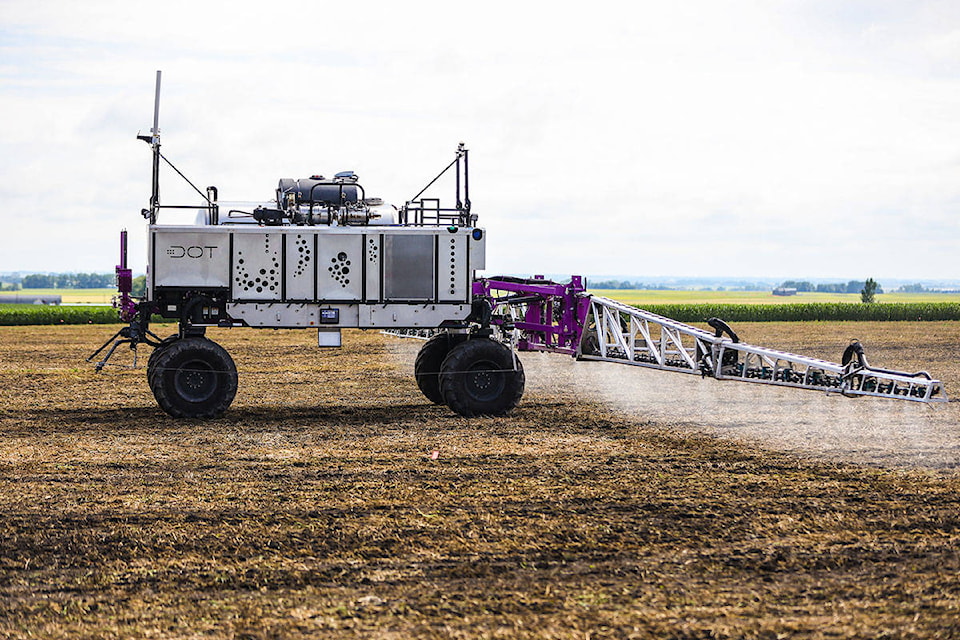Olds College will become the first post-secondary institution in the world to have a robot on its farm.
The autonomous equipment will provide students with hands-on experience with the technology, as well as permit the college to do some applied research into agriculture robotics.
The DOT mobile platform can complete farm tasks – in other words, it’s a farm robot.
The platform connects with devices to complete tasks such as seeding the crop, spraying it with herbicide, fungicide, nutrients and fertilizer.
James Benkie, dean of agriculture technology at the college, said many people would compare the robot to a tractor, but there are several differences between the two.
“DOT is like the piggyback; it works with a specific sprayer to carry it around the field, and the DOT takes up the seed tool to perform the functions.
“If DOT was the tractor, it would pull the implement, but DOT actually doesn’t pull the implement. It carries it.”
Agriculture students often hear about autonomous technology, but it’s rare that they get exposed to it, unless they’re in the dairy industry, said Benkie.
But now, Olds College agriculture students will be able to get up close and personal with the technology, learn how it works, how to use it, how to fix and maintain it, the dean said.
“They’ll learn how to leverage the value of a robot.”
The college will collect information and observations to understand the benefits and challenges of autonomous agricultural equipment during the next three years.
The research will help the college answer some key questions: the return on investment, fuel efficiency, the environmental impact and the labour benefits of autonomous technology.
Benkie said when it comes to agriculture technology, there are practical gaps that exist today with unanswered questions.
“As a farmer, how would I even go about making the decision to purchase, or use, or hire a robot to do a field functionary task on the farm?
“Do I have to have somebody always watching it? Do I have to have a resource or person that’s programming it?
“Is it actually going to save money for the farmer, or is it going to allow them to redirect their time to do other things?”
One of the other differences between a tractor and a robot is the lower horsepower and the fact DOT is much lighter and smaller.
With its research, the college hopes to study the environmental footprint, Benkie added.
“If I have DOT, do I drive on the field less? If I have DOT, will I save money on fuel, which then leads to a reduction in greenhouse gases?”
The DOT autonomous technology was developed in Saskatchewan. According to the seedotrun.com website, DOT’s short- and long-range sensors make the platform more accurate and attentive than humans.
DOT constantly updates itself with images of the physical world around itself and processes the data at lightning speed. Capable of making decisions, DOT will send alerts to the farmer if it is unsure how to proceed.
mamta.lulla@reddeeradvocate.com
Like us on Facebook and follow us on Twitter
